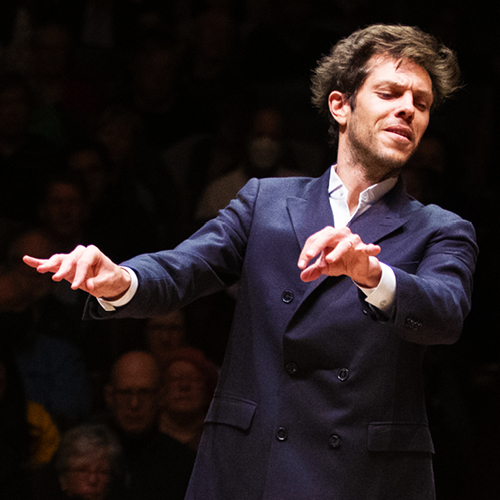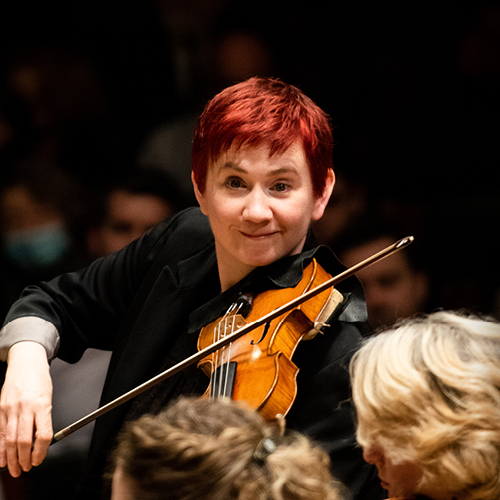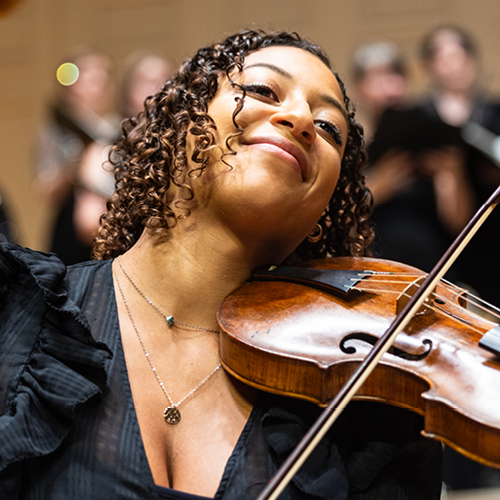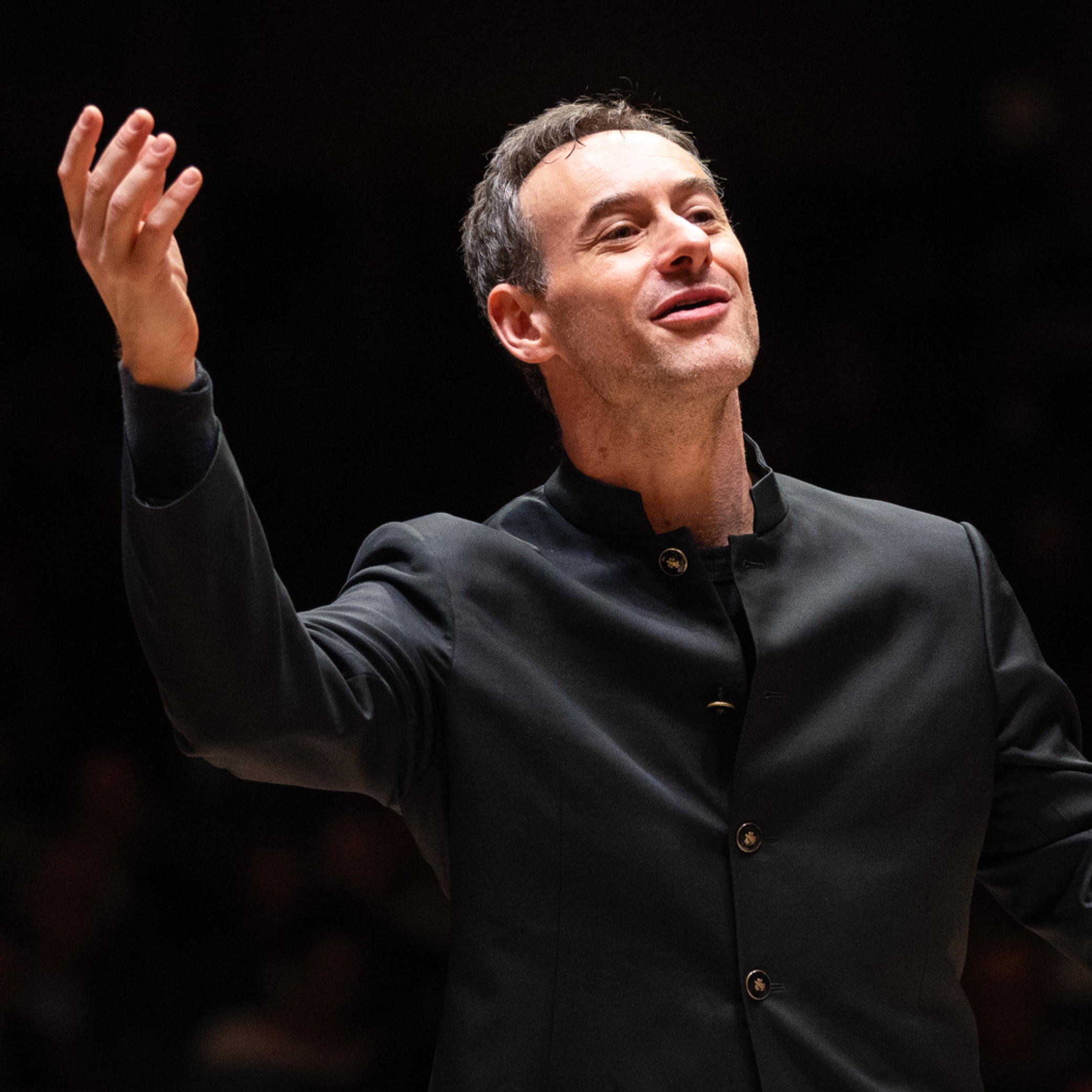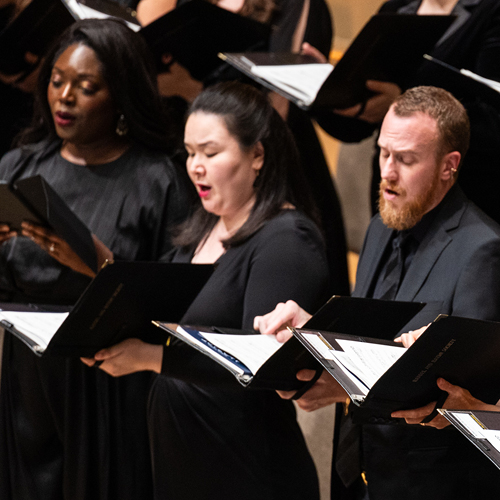
[vc_row type=”in_container” full_screen_row_position=”middle” bg_image=”7990″ bg_position=”center center” bg_repeat=”no-repeat” scene_position=”center” text_color=”dark” text_align=”left” color_overlay=”#d8d8d8″ overlay_strength=”0.3″][vc_column column_padding=”no-extra-padding” column_padding_position=”all” background_color_opacity=”1″ background_hover_color_opacity=”1″ width=”1/1″ tablet_text_alignment=”default” phone_text_alignment=”default”][image_with_animation image_url=”7991″ alignment=”” animation=”None” box_shadow=”none” max_width=”100%”][/vc_column][/vc_row][vc_row type=”in_container” full_screen_row_position=”middle” scene_position=”center” text_color=”dark” text_align=”left” overlay_strength=”0.3″][vc_column column_padding=”no-extra-padding” column_padding_position=”all” background_color_opacity=”1″ background_hover_color_opacity=”1″ width=”1/1″ tablet_text_alignment=”default” phone_text_alignment=”default”][vc_column_text]That Messiah became an “institution” is a testament to the unparalleled skill in musical storytelling of George Frideric Handel (1685-1759). Much of the appeal of Messiah lies in Handel’s bold and subtle use of text painting; that is, creating a direct relationship between a word or phrase and the music used to set it.
[/vc_column_text][/vc_column][/vc_row][vc_row type=”in_container” full_screen_row_position=”middle” equal_height=”yes” content_placement=”middle” scene_position=”center” text_color=”dark” text_align=”left” overlay_strength=”0.3″][vc_column column_padding=”no-extra-padding” column_padding_position=”all” background_color_opacity=”1″ background_hover_color_opacity=”1″ width=”1/3″ tablet_text_alignment=”default” phone_text_alignment=”default”][image_with_animation image_url=”7997″ alignment=”” animation=”None” box_shadow=”none” max_width=”100%”][/vc_column][vc_column column_padding=”no-extra-padding” column_padding_position=”all” background_color_opacity=”1″ background_hover_color_opacity=”1″ width=”2/3″ tablet_text_alignment=”default” phone_text_alignment=”default”][vc_column_text]Handel could rely on his audience knowing the Biblical passages compiled by his librettist Charles Jennens (1700-1773) and so he combines more obvious text painting with words emphasized musically to complement the text. The sense of resolution and release as the opening sinfony concludes in minor and the next number begins in major is a subtle foreshadowing of the text soon heard, “Comfort ye my people.”
[/vc_column_text][/vc_column][/vc_row][vc_row type=”in_container” full_screen_row_position=”middle” scene_position=”center” text_color=”dark” text_align=”left” overlay_strength=”0.3″][vc_column column_padding=”no-extra-padding” column_padding_position=”all” background_color_opacity=”1″ background_hover_color_opacity=”1″ width=”1/1″ tablet_text_alignment=”default” phone_text_alignment=”default”][vc_column_text]In the aria, “Every valley shall be exalted,” Handel writes explicitly “crooked” and “straight” or “plain”
melodic lines for both the voice and instruments as musical elaborations of these words. In an aria from Part 2, “Thou shalt break them,” Handel uses an accented, descending, and jagged line in the strings, which is echoed in the voice, to underscore the image of shattering something “to pieces like a potter’s vessel.”
Handel does not limit text painting to just the soloists. The choruses, such as “His Yoke is Easy” from Part 1 also emphasize and reflect the text. Anyone who has sung this chorus knows that is far from easy and therein lies the text painting. A yoke, of course, is neither easy nor light. By setting the text in a way that sounds effortless but is, in fact, difficult, Handel is text painting not only the words “easy” and “yoke,” but also the deeper meaning of the “burden” of following a moral life, an idea that would resonate with his audience. Finally, Handel uses imitation (a fugue) so that with each vocal entrance the musical phrase is given immediacy and the symbolism of many becoming one.
The genesis of Handel’s Messiah can be traced to two fortuitous events in the summer of 1741. First, Charles Jennens, who had supplied Handel with texts for other oratorios, sent Handel a collection of scripture passages in the hope that the composer would set it. Jennens’s assembled text, from the Old and New Testaments, does not tell a continuous story; rather the text refers to the prophesy and birth of Christ (Part 1), his death and resurrection (Part 2), and the redemption and response of the believer (Part 3).
Second, William Cavendish, the Duke of Devonshire and Lord Lieutenant of Ireland, invited Handel to Dublin to participate in a season of oratorio concerts to benefit local charities. Handel seized the opportunity to present his works and set Jennens’s text in just 24 days. Dublin was a major cultural center at this time and received Handel with open arms. Anticipation for Handel’s new oratorio ran so high that an announcement in the Dublin Journal requested that men leave their swords at home and suggested that ladies “would be pleased to come without hoops [in their skirts] … making room for more company.”
[/vc_column_text][/vc_column][/vc_row][vc_row type=”in_container” full_screen_row_position=”middle” equal_height=”yes” content_placement=”middle” scene_position=”center” text_color=”dark” text_align=”left” overlay_strength=”0.3″][vc_column column_padding=”no-extra-padding” column_padding_position=”all” background_color_opacity=”1″ background_hover_color_opacity=”1″ width=”1/3″ tablet_text_alignment=”default” phone_text_alignment=”default”][image_with_animation image_url=”7998″ alignment=”” animation=”Fade In” img_link_large=”yes” box_shadow=”none” max_width=”100%”][/vc_column][vc_column column_padding=”no-extra-padding” column_padding_position=”all” background_color_opacity=”1″ background_hover_color_opacity=”1″ width=”2/3″ tablet_text_alignment=”default” phone_text_alignment=”default”][vc_column_text]In January 1742, the deans of St. Patrick’s Church and Christ Church, Dublin, were asked to allow their choir members to participate in what would be the premiere performance of Messiah. Christ Church agreed and at first it seemed that St. Patrick’s Church concurred. However, the dean of St. Patrick’s Church, Jonathan Swift, then revoked permission, claiming never to have granted it in the first place. This turn of events was potentially disastrous because both churches had to agree in order for the performance to proceed. Eventually Swift did agree and the work was premiered in Dublin at the Music Hall on Fishamble Street on April 13, 1742.[/vc_column_text][/vc_column][/vc_row][vc_row type=”in_container” full_screen_row_position=”middle” scene_position=”center” text_color=”dark” text_align=”left” overlay_strength=”0.3″][vc_column column_padding=”no-extra-padding” column_padding_position=”all” background_color_opacity=”1″ background_hover_color_opacity=”1″ width=”1/1″ tablet_text_alignment=”default” phone_text_alignment=”default”][vc_column_text]Handel returned to London and, in 1743, gave that city’s premiere of A Sacred Oratorio; he refrained from titling the work Messiah because of objections to the use of Biblical texts in a concert setting. Some of these complaints were voiced in the press on the same day the work was advertised. An anonymous letter to the Universal Spectator, raised concerns about the use of Biblical texts as well as the propriety of theater performers, whose morals were assumed to be questionable, singing these sacred texts: “I ask if the Playhouse is a fit Temple to perform it [a sacred oratorio] in, or a Company of Players fit Ministers of God’s Word.”
These first London performances were not as successful as those in Ireland; however, beginning with a 1750 concert to benefit the Foundling Hospital, Messiah performances became an annual event in London. Objections to Handel’s sacred oratorio had subsided and were replaced with descriptions similar to that written by Miss Catherine Talbot in 1756: “The only public place I have been to this winter was to hear the Messiah, nor can there be a nobler entertainment.” Soon performances of the oratorio were mounted in the Old and New Worlds.[/vc_column_text][/vc_column][/vc_row][vc_row type=”in_container” full_screen_row_position=”middle” equal_height=”yes” content_placement=”middle” scene_position=”center” text_color=”dark” text_align=”left” overlay_strength=”0.3″][vc_column column_padding=”no-extra-padding” column_padding_position=”all” background_color_opacity=”1″ background_hover_color_opacity=”1″ width=”2/3″ tablet_text_alignment=”default” phone_text_alignment=”default”][vc_column_text]For the 1742 premiere of Messiah in Dublin, it is estimated that Handel had a combined ensemble of approximately 50 performers, with almost the same number of vocalists as instrumentalists. Experienced singers from the better church choirs made up the chorus; two different soloists shared the roles for each voice part. While the chorus had no female singers, the soprano and alto solo parts were sung by women. For this performance, Handel may have reworked several soprano solos for Mrs. Susanna Cibber, a well-known actress and alto. One story relates that Mrs. Cibber’s performance of “He was despised” was so moving that one person in the audience shouted “For this thy sins be forgiven!”[/vc_column_text][/vc_column][vc_column column_padding=”no-extra-padding” column_padding_position=”all” background_color_opacity=”1″ background_hover_color_opacity=”1″ width=”1/3″ tablet_text_alignment=”default” phone_text_alignment=”default”][image_with_animation image_url=”7995″ alignment=”center” animation=”Fade In” box_shadow=”none” max_width=”100%”][/vc_column][/vc_row][vc_row type=”in_container” full_screen_row_position=”middle” equal_height=”yes” content_placement=”middle” scene_position=”center” text_color=”dark” text_align=”left” overlay_strength=”0.3″][vc_column column_padding=”no-extra-padding” column_padding_position=”all” background_color_opacity=”1″ background_hover_color_opacity=”1″ width=”1/3″ tablet_text_alignment=”default” phone_text_alignment=”default”][image_with_animation image_url=”7994″ alignment=”center” animation=”Fade In” box_shadow=”none” max_width=”100%”][/vc_column][vc_column column_padding=”no-extra-padding” column_padding_position=”all” background_color_opacity=”1″ background_hover_color_opacity=”1″ width=”2/3″ tablet_text_alignment=”default” phone_text_alignment=”default”][vc_column_text]For the London performances, Handel had more singers available to him; he continued to divide the solo numbers between two soloists who would have sung the choruses as well. After Handel’s death, Messiah performances generally followed a similar pattern. In 1771, at one of the regular performances to benefit the Foundling Hospital, the professional chorus of 30 was augmented by 26 volunteer singers. This is the first known performance of Messiah with a volunteer chorus and the first time the chorus was significantly larger than the orchestra.[/vc_column_text][/vc_column][/vc_row][vc_row type=”in_container” full_screen_row_position=”middle” scene_position=”center” text_color=”dark” text_align=”left” overlay_strength=”0.3″][vc_column column_padding=”no-extra-padding” column_padding_position=”all” background_color_opacity=”1″ background_hover_color_opacity=”1″ width=”1/2″ tablet_text_alignment=”default” phone_text_alignment=”default”][vc_column_text]The trend of larger choruses, and eventually a larger orchestra to match it, reached new heights with a Westminster Abbey performance of Messiah in 1784. The organizers of this Handel tribute, a five-day festival, wanted to mount performances “on such a scale of magnificence, as could not be equaled in any part of the world.” They achieved this goal by assembling over 250 singers and a matching number of instrumentalists. The accuracy of playing impressed music chronicler Charles Burney who wrote: “When all the wheels of that huge machine, the Orchestra, were in motion, the effect resembled a clock-work in everything, but want of feeling and expression.”
The excitement generated by the Messiah at the 1784 Handel Commemoration inspired other responses as well. Reverend John Newton, Rector of St. Mary, Woolnorth in London, based a series of fifty sermons on the texts of the oratorio, collectively titled “Expository Discourses on the Series of Scriptural Passages which form the subject of the Celebrated Oratorio of Handel.” [/vc_column_text][/vc_column][vc_column centered_text=”true” column_padding=”no-extra-padding” column_padding_position=”all” background_color_opacity=”1″ background_hover_color_opacity=”1″ width=”1/2″ tablet_text_alignment=”default” phone_text_alignment=”default”][vc_column_text][/vc_column_text][/vc_column][/vc_row][vc_row type=”in_container” full_screen_row_position=”middle” equal_height=”yes” content_placement=”middle” scene_position=”center” text_color=”dark” text_align=”left” overlay_strength=”0.3″][vc_column column_padding=”no-extra-padding” column_padding_position=”all” background_color_opacity=”1″ background_hover_color_opacity=”1″ width=”1/3″ tablet_text_alignment=”default” phone_text_alignment=”default”][image_with_animation image_url=”7993″ alignment=”center” animation=”None” img_link_large=”yes” box_shadow=”none” max_width=”100%”][/vc_column][vc_column column_padding=”no-extra-padding” column_padding_position=”all” background_color_opacity=”1″ background_hover_color_opacity=”1″ width=”2/3″ tablet_text_alignment=”default” phone_text_alignment=”default”][vc_column_text]Newton, who was no lover of Handel’s music and who felt that the oratorio was trivializing scripture to a certain extent, concluded his sermons by suggesting “that the next time you hear the Messiah, God may bring something that you have heard in the course of these sermons … to your remembrance.” Still others held a different view, such as Abigail Adams’ reaction to a performance of the Messiah in 1785, “I could scarcely believe myself an inhabitant of Earth. I was one continued shudder from the beginning to the end of the performance.”
The enduring appeal of the Messiah lies in the sum of its parts; each solo or chorus is beautiful on its own, but together the numbers create a whole that speaks to each individual in a unique way. Although Jennens expressed disappointment with Handel’s setting of his Scripture collection, posterity has determined that Handel did indeed fulfill Jennens’s wish that the composer “lay his whole Genius and Skill upon it, … as the Subject excels every other Subject. The Subject is Messiah.”[/vc_column_text][/vc_column][/vc_row][vc_row type=”in_container” full_screen_row_position=”middle” scene_position=”center” text_color=”dark” text_align=”left” overlay_strength=”0.3″][vc_column column_padding=”no-extra-padding” column_padding_position=”all” background_color_opacity=”1″ background_hover_color_opacity=”1″ width=”1/1″ tablet_text_alignment=”default” phone_text_alignment=”default”][vc_column_text]Teresa M. Neff, PhD Christopher Hogwood Historically Informed Performance Fellow.[/vc_column_text][/vc_column][/vc_row]

